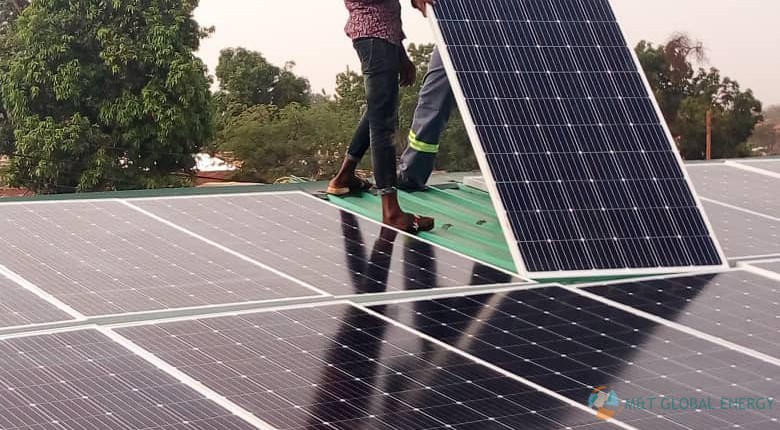Benefits
⦁ Prioritize consumption of solar power and help reducing Environment pollution
⦁ No need to pay Solar primary energy as this is free.
⦁ Reducing your electrictiy bill with a short pay back period / ROI
⦁ Avoid utility peak usage or time of usage charges for utility company
⦁ Security from grid outage with reliable back-up power
Solutions
How does solar self-consumption work?
Any energy that your system produces will go first into your home to power any devices that happen to be running – thus reducing the amount of energy you have to purchase (‘import’) from your electricity utility company. If your solar system produces more energy than your household can consume at a given moment (e.g. if you’re not home), the excess solar is automatically sent back into the grid (in case of grid tie system this ‘exported’ solar energy is what earns you the low feed-in rates mentioned above) or save in battery back up systems to bridge over the utility power outage time.
Your goal, therefore, is to try to keep as much solar as possible in your home, powering your devices. There are two dovetailed approaches that you can take to achieve this goal:
⦁ get a system that is well-sized for your home,
⦁ and b) try to make sure you run devices when the sun is shining.
If we represent it visually, solar self-consumption looks something like the graphs below. The blue areas represent household electricity consumption, while the red areas represent solar system energy production (in this case, a 3kW and a 5kW solar system). The red areas above the blue lines represent solar exported to the grid, while the blue on its own is energy being purchased/imported form the grid. The overlapping red/blue area is where the solar energy meets your home’s energy demand.
An example how home energy consumption and solar production from a 3kW solar system intersect during the day. The red area above the blue line represents exported solar energy.
The situation as above, but this time with a larger, 5kW solar system. The red area above the blue line represents exported solar energy.
The table below summarises in numbers the two charts above in terms of the percentage of self-consumed solar & system payback periods (along with some other useful figures).
Example – Douala home using 30kWh/day 3 kW @€3800 5kW @€5300
Demand met by solar 24% 30%
‘Natural’ % solar self-consumed 61% 46%
Bill reduction 28% 40%
‘Natural’ payback period ~6 years ~6 years
Payback period @80% self-consumption ~5.3 years ~4.6 years
In the case of the 3kW solar system, only about 40% of the solar energy is being ‘wasted’ (i.e. exported to the grid), while over 50% of the solar energy is exported in the case of the 5kW system. But, as the table also shows, the greater overall bill reduction (based on a flat rate of 21c/kWh and a solar export rate of 6c/kWh) would be had with the 5kW system.
Interestingly, difference between payback periods on the systems is not particularly large (at least at the example prices we’ve plugged in here). Looking only at these ‘natural’ self-consumption rates (i.e. the amount of solar that would go to direct use in the home without any special technology, effort or behavioural change), payback periods for both systems are about 6 years. In either case, this is pretty good.
Should you opt for the smaller system?
Your first instinct might – and our first recommendation – would be to stick with the smaller system – both because it would cost less and because it has a marginally better return than the larger one. But what would happen if you could ratchet up your solar self-consumption to use even more of the solar energy directly? Let’s assume that you manage to get your solar self-consumption ratio up to 80%.
Suddenly, (as the table shows) the payback period for the 5kW system drops down to less than years – shorter than what would be possible with the 3kW system at 80% self-consumption. This means that the larger system promises a lot more potential for bill savings than the smaller one. This could be useful to you if you think your daytime energy consumption is going to increase in the coming years – or even if you just want insurance in case it does.
The other benefit here is that with the larger system you’ve got excess energy which could be used to charge a battery storage system – either now or in the future. Battery storage prices are coming down fast, and in some cases they already make good financial sense.
If you are not sure if self- consumption can be profitable for you and are interesting for this solution, please contact us or sent us a message or inquiry and we will get back to you.




